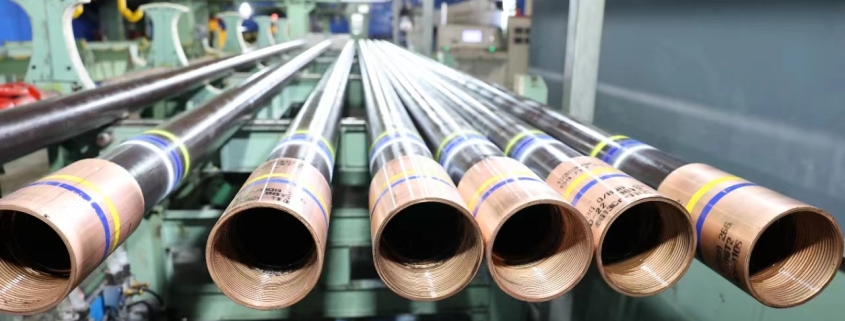SMSS 13Cr and DSS 22Cr in H₂S/CO₂-Oil-Water Environment
Introduction
The corrosion behaviors of Super Martensitic Stainless Steel (SMSS) 13Cr and Duplex Stainless Steel (DSS) 22Cr in an H₂S/CO₂-oil-water environment are of significant interest, especially in the oil and gas industry, where these materials are often exposed to such harsh conditions. Here’s an overview of how each material behaves under these conditions:
1. Super Martensitic Stainless Steel (SMSS) 13Cr:
Composition: SMSS 13Cr typically contains around 12-14% Chromium, with small amounts of Nickel and Molybdenum. The high Chromium content gives it good resistance to corrosion, while the martensitic structure provides high strength.
Corrosion Behavior:
CO₂ Corrosion: SMSS 13Cr shows moderate resistance to CO₂ corrosion, primarily due to forming a protective chromium oxide layer. However, in the presence of CO₂, localized corrosion, such as pitting and crevice corrosion, is risky.
H₂S Corrosion: H₂S increases the risk of sulfide stress cracking (SSC) and hydrogen embrittlement. SMSS 13Cr is somewhat resistant but not immune to these forms of corrosion, especially at higher temperatures and pressures.
Oil-Water Environment: Oil can sometimes provide a protective barrier, reducing the metal surface’s exposure to corrosive agents. However, water, particularly brine, can be highly corrosive. The balance of oil and water phases can significantly influence the overall corrosion rate.
Common Issues:
Sulfide Stress Cracking (SSC): The martensitic structure, while strong, is susceptible to SSC in the presence of H₂S.
Pitting and Crevice Corrosion: These are significant concerns, especially in environments with chlorides and CO₂.
2. Duplex Stainless Steel (DSS) 22Cr:
Composition: DSS 22Cr contains around 22% Chromium, approximately 5% Nickel, 3% Molybdenum, and a balanced austenite-ferrite microstructure. This gives DSS excellent corrosion resistance and high strength.
Corrosion Behavior:
CO₂ Corrosion: DSS 22Cr is more resistant to CO₂ corrosion than SMSS 13Cr. The high chromium content and the presence of molybdenum help form a stable and protective oxide layer that resists corrosion.
H₂S Corrosion: DSS 22Cr is highly resistant to H₂S-induced corrosion, including SSC and hydrogen embrittlement. The balanced microstructure and alloy composition help in mitigating these risks.
Oil-Water Environment: DSS 22Cr performs well in mixed oil-water environments, resisting general and localized corrosion. The presence of oil can enhance corrosion resistance by forming a protective film, but this is less critical for DSS 22Cr due to its inherent corrosion resistance.
Common Issues:
Stress Corrosion Cracking (SCC): While more resistant than SMSS 13Cr, DSS 22Cr can still be susceptible to SCC under certain conditions, such as high chloride concentrations at elevated temperatures.
Localized Corrosion: DSS 22Cr is generally very resistant to pitting and crevice corrosion, but these can still occur under extreme conditions.
Comparative Summary:
Corrosion Resistance: DSS 22Cr generally offers superior corrosion resistance compared to SMSS 13Cr, especially in environments with H₂S and CO₂.
Strength and Toughness: SMSS 13Cr is more robust but susceptible to corrosion issues like SSC and pitting.
Application Suitability: DSS 22Cr is often preferred in environments with higher corrosion risks, such as those with high levels of H₂S and CO₂, whereas SMSS 13Cr might be selected for applications requiring higher strength with moderate corrosion risks.
Conclusion:
When selecting between SMSS 13Cr and DSS 22Cr for use in H₂S/CO₂-oil-water environments, DSS 22Cr is typically the better choice for resisting corrosion, particularly in more aggressive environments. However, the final decision should consider the specific conditions, including temperature, pressure, and the relative concentrations of H₂S and CO₂.




